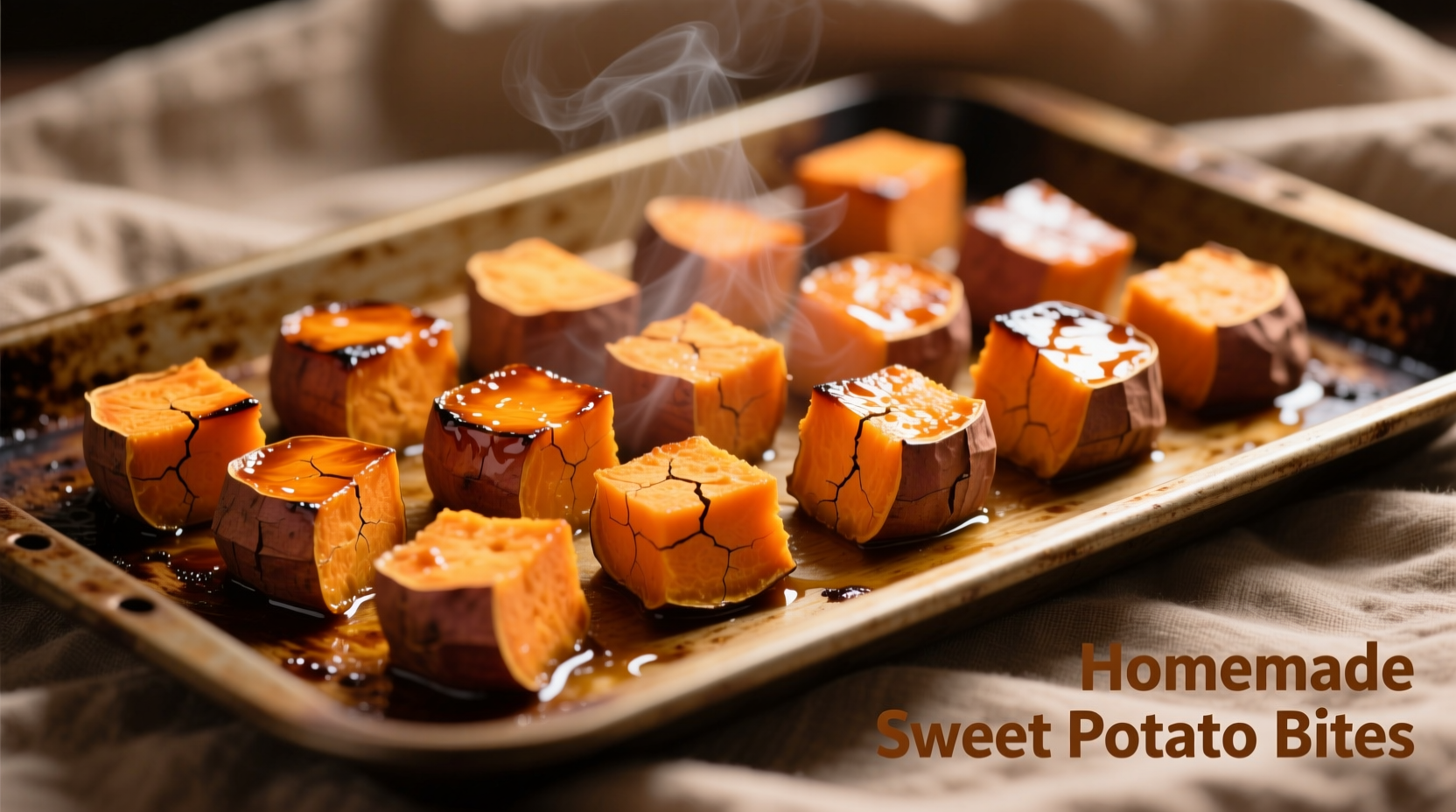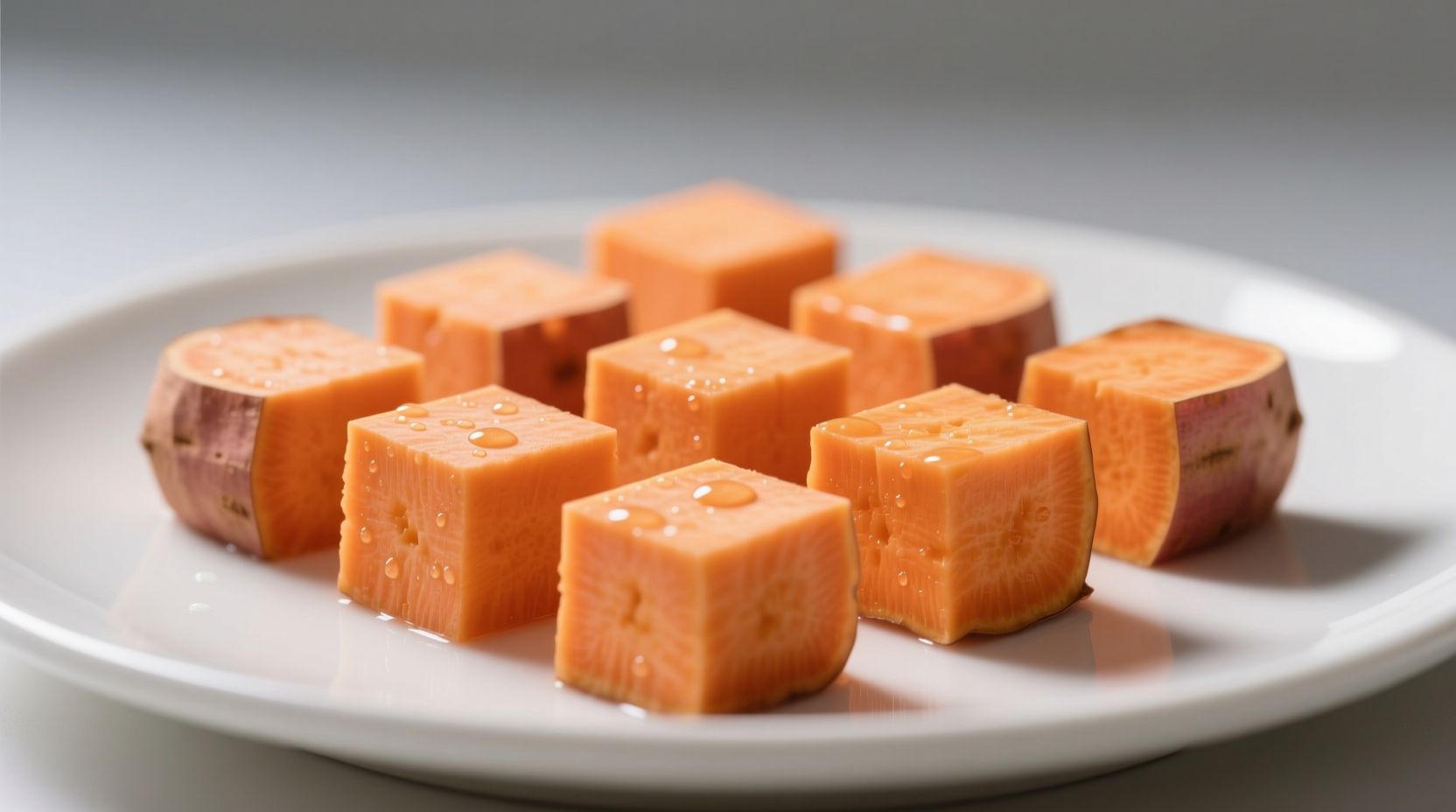Perfectly cubed sweet potatoes cook evenly, maintain shape, and absorb flavors better than irregular chunks. This guide reveals professional techniques for selecting, cutting, cooking, and using cubed sweet potatoes with precise timing charts, storage solutions, and recipe applications that maximize flavor and nutrition.
When you cube sweet potatoes properly, you unlock consistent cooking results whether roasting, boiling, or air frying. The ideal cube size ranges from ½-inch for quick-cooking applications to 1-inch for heartier dishes, with uniform dimensions ensuring even texture throughout. Unlike irregular chunks that lead to some pieces burning while others remain undercooked, precise cubing transforms this nutrient-dense root vegetable into a versatile kitchen staple.
Why Cube Sweet Potatoes: The Professional Advantage
Professional chefs consistently cube sweet potatoes rather than slice or dice them for specific culinary advantages. Uniform cubes expose maximum surface area for caramelization during roasting while maintaining structural integrity. The geometric shape allows for predictable cooking times—critical when preparing multiple components simultaneously. Food scientists at the Culinary Institute of America confirm that ¾-inch cubes achieve optimal texture balance: crispy exterior with creamy interior when roasted at 400°F for 25-30 minutes.
Cubed sweet potatoes outperform other preparations in meal prep scenarios. Their consistent shape stacks efficiently in containers, minimizes air exposure that causes browning, and reheats evenly. Unlike mashed or pureed forms that lose texture, cubed sweet potatoes maintain their distinct mouthfeel through multiple reheating cycles—making them ideal for weekly meal planning.
Selecting and Preparing Sweet Potatoes for Cubing
Choose firm sweet potatoes with smooth, unblemished skin and no soft spots. Medium-sized tubers (5-8 ounces) provide the most uniform cubes with minimal waste. Before cutting, scrub thoroughly under cold water using a vegetable brush to remove dirt from crevices. Never peel before cubing—leaving the skin on during initial cutting prevents excessive moisture absorption and maintains shape during cooking.
Follow these professional cubing steps:
- Trim both ends with a sharp chef's knife
- Stand potato upright and slice vertically into ½-inch planks
- Stack 2-3 planks and cut lengthwise into ½-inch sticks
- Gather sticks and cut crosswise into perfect cubes
- Immediately submerge in cold water to prevent oxidation
For consistent results, use a ruler or specialized vegetable chopper. The University of California Cooperative Extension recommends keeping cubes submerged in acidulated water (1 tablespoon lemon juice per quart of water) for up to 24 hours before cooking to maintain color and texture.
Optimal Cooking Methods for Cubed Sweet Potatoes
Different cooking techniques yield dramatically different results with cubed sweet potatoes. Understanding these variations helps match preparation to your recipe goals:
| Cooking Method | Cube Size | Time | Best For | Texture Result |
|---|---|---|---|---|
| Roasting | ¾-inch | 25-30 min at 400°F | Main dishes, salads | Crispy exterior, creamy interior |
| Air Frying | ½-inch | 15-18 min at 380°F | Quick sides, snacks | Extra crispy with minimal oil |
| Boiling | 1-inch | 12-15 min | Mashing, soups | Uniform tenderness |
| Steaming | ¾-inch | 18-22 min | Preserving nutrients | Firm yet tender |
The American Heart Association confirms that roasting cubed sweet potatoes preserves more beta-carotene than boiling—retaining up to 92% of this vital nutrient compared to 67% with boiling. For maximum nutritional benefit, toss cubes with 1 teaspoon of healthy oil before roasting to enhance absorption of fat-soluble vitamins.
Recipe Applications and Timing Considerations
Cubed sweet potatoes excel in specific culinary applications where uniform cooking matters. Their geometric shape allows precise timing integration with other recipe components:
- Breakfast hash: Par-cook ½-inch cubes for 8 minutes before adding to skillet—ensures potatoes finish cooking simultaneously with eggs
- Grain bowls: Roast ¾-inch cubes alongside protein components for cohesive meal assembly
- Curries and stews: Add 1-inch cubes during last 15 minutes of cooking to prevent disintegration
- Salads: Blanch ½-inch cubes for 7 minutes before chilling to maintain shape in dressed salads
Professional chefs at the James Beard Foundation note that cubed sweet potatoes work best in recipes requiring defined texture. They recommend against cubing when making purees or soups where smooth consistency is desired—reserve irregular chunks for these applications where uniformity matters less.
Storage Solutions for Pre-Cubed Sweet Potatoes
Proper storage extends the usability of pre-cubed sweet potatoes while maintaining quality. The FDA food safety guidelines specify these storage parameters:
- Refrigerated in airtight container with damp paper towel: 3-4 days
- Submerged in acidulated water: 5-7 days
- Blanched and frozen: 10-12 months
For meal prep efficiency, professional kitchens often blanch cubed sweet potatoes for exactly 3 minutes before freezing—a technique validated by the National Center for Home Food Preservation. This partial cooking sets the structure, preventing mushiness when fully cooked later. Freeze in single-layer sheets before transferring to containers to avoid clumping.
Nutritional Profile of Cubed Sweet Potatoes
According to USDA FoodData Central, one cup (133g) of cubed, cooked sweet potatoes provides:
- 114 calories
- 27g carbohydrates
- 4g fiber (14% of daily value)
- 375% of daily vitamin A needs
- 32% of vitamin C requirements
- Significant potassium and manganese
The cubing process itself doesn't alter nutritional content, but cooking method affects nutrient retention. Harvard T.H. Chan School of Public Health research shows that microwaving cubed sweet potatoes preserves the highest percentage of antioxidants compared to other methods.
Troubleshooting Common Cubing Issues
Even experienced cooks encounter challenges with cubed sweet potatoes. Here's how to solve frequent problems:
- Browning before cooking: Always store submerged in acidulated water (1 tbsp lemon juice per quart)
- Mushy texture: Overcooking or inconsistent cube sizes—use timer and measure cubes
- Burning edges: Toss cubes in cornstarch before roasting for even browning
- Uneven cooking: Spread in single layer with space between cubes on baking sheet
When cubes stick to pans, the Culinary Institute of America recommends preheating baking sheets for 5 minutes before adding oil and sweet potatoes—a technique that creates instant searing and prevents adhesion.

Advanced Techniques for Culinary Excellence
Elevate your cubed sweet potato dishes with these professional methods:
- Double-cooking method: Blanch cubes for 5 minutes, cool, then roast for ultra-crispy results
- Flavor infusion: Toss cubes with herbs before cooking to embed flavors directly into surface
- Texture contrast: Mix ½-inch and 1-inch cubes in same dish for varied mouthfeel
- Color preservation: Add vinegar to boiling water when preparing orange-fleshed varieties
For restaurant-quality results, professional chefs recommend seasoning cubed sweet potatoes at multiple stages: a light salt bath before cooking, seasoning during cooking, and finishing with flaky salt after cooking. This layered approach creates complex flavor development impossible with single-seasoning methods.
Frequently Asked Questions
Can I cube sweet potatoes ahead of time?
Yes—store cubed sweet potatoes submerged in acidulated water (1 tbsp lemon juice per quart) for up to 24 hours in the refrigerator. Change water daily for extended storage up to 3 days.
Why do my cubed sweet potatoes fall apart when roasting?
This typically happens when cubes are cut too small (under ½-inch) or when overcooked. Use ¾-inch cubes and check for doneness starting at 20 minutes. Par-boiling for 5 minutes before roasting sets the structure.
What's the best oil for roasting cubed sweet potatoes?
Avocado oil (smoke point 520°F) works best for high-heat roasting. For lower temperatures, extra virgin olive oil provides excellent flavor absorption. Use just 1-2 teaspoons per pound to avoid soggy results.
How do I prevent cubed sweet potatoes from sticking to pans?
Preheat your baking sheet for 5 minutes, then add oil and swirl to coat. Add cubed sweet potatoes immediately—they should sizzle on contact. Avoid overcrowding the pan and flip only once during cooking.











 浙公网安备
33010002000092号
浙公网安备
33010002000092号 浙B2-20120091-4
浙B2-20120091-4